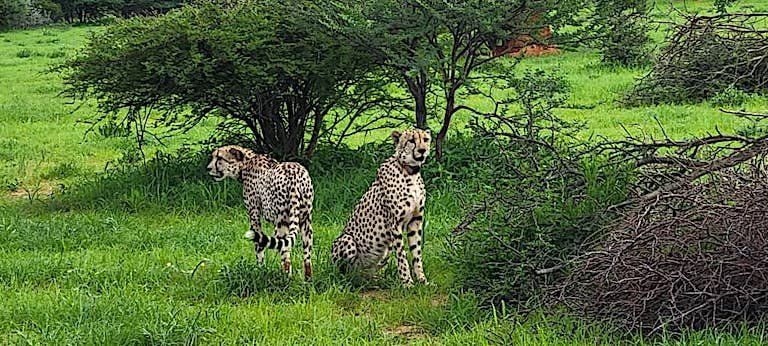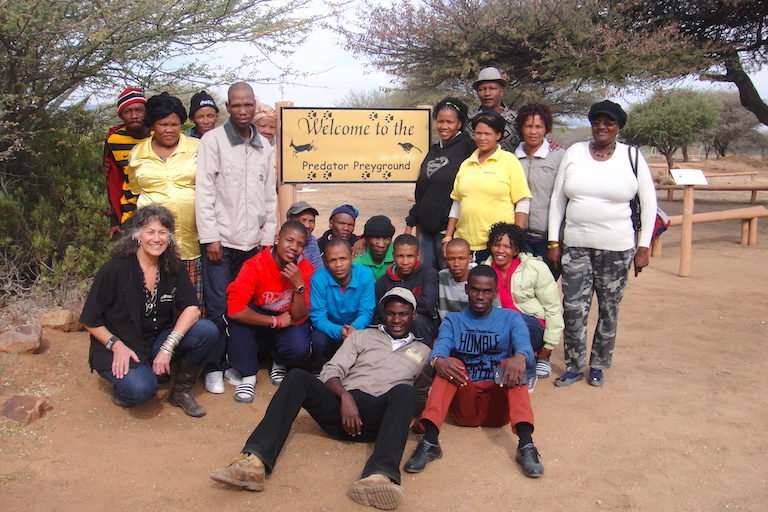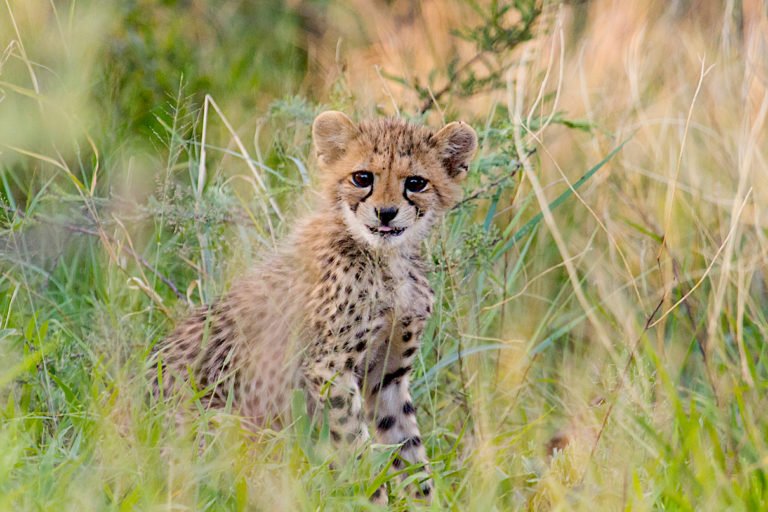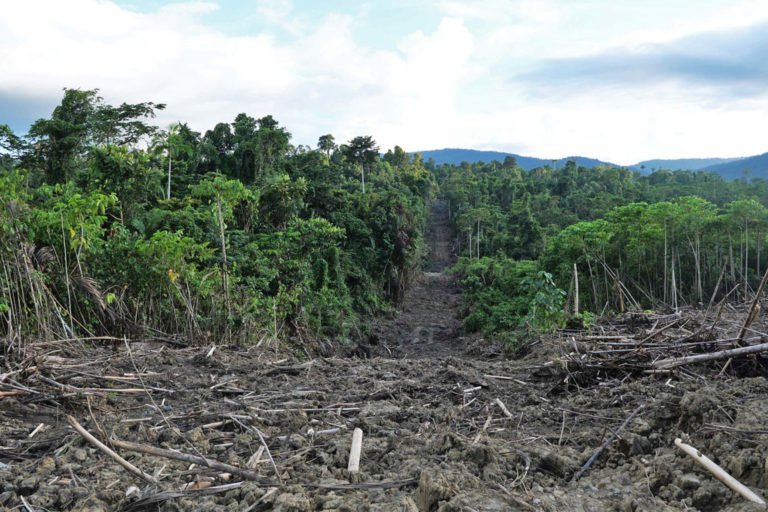- A long-running program in Namibia has shown how orphaned cheetahs can be successfully rewilded, presenting a rehabilitation template for wild-born, captive-bred individuals of other species.
- The program by the Cheetah Conservation Fund took in 86 young cheetahs orphaned due to human-wildlife conflict, and eventually released 36 of them between 2004 and 2018.
- Twenty-seven of the cheetahs eventually became independent in the wild, while one female went on to raise two cubs — the “pinnacle of success” for any wildlife reintroduction effort.
- The study authors and independent experts agree that having safe release sites — where the newly reintroduced animals won’t run the risk of conflict with humans or other predators — and rigorous post-release monitoring are key to rehabilitation success.
The cheetah is the world’s fastest land animal, but it’s running out of space. Its range has been reduced dramatically over the past decades, and populations continue to decline. Identifying solutions to conserve and protect the species in the wild is thus vital. A new study published in the journal Oryx by the Cheetah Conservation Fund (CCF) charts the results of a cheetah orphan release project that operated between 2002 and 2018 in Namibia.
Rescued orphans were put through a rigorous rehabilitation program. “Our findings demonstrate the ability of wild-born, captive-raised cheetah to transition back into the wild with strategic pre- and post-release management directed towards optimizing survival,” the study notes. The results of the project are framed as a methodological framework on cheetah rehabilitation and post-release management for others to use and adapt as part of a strategy to reverse the decline of the species, Acinonyx jubatus.
From 2001 to 2012, the project took in 86 young cheetahs orphaned due to human-wildlife conflict. Careful selection of ideal candidates for eventual release was a key part of the process, said CCF executive director Laurie Marker, and 36 of the orphans went through a release process between 2004 and 2018. Cheetahs over the age of six months had spent more time in the wild with their mothers, learning survival skills. Younger individuals, between the ages of three to five months, were formed into artificial coalitions with older cheetahs: “[T]hey grow up together, and if you bring them in at a young age, they will bond and become like family,” Marker said. Coalitions tended to survive longer in the wild compared to individuals, according to the study.
During their time as captive animals and in the run-up to their release, the selected cheetahs were kept in top mental and physical condition through daily exercise. “And so, once they go out, it’s not like they have to build up their muscles,” Marker told Mongabay.
When the time came, two types were tested with individuals over the age of two and a half years old: hard and soft releases. The former entailed a release without a breaking-in period. Those in the soft release group were kept in a boma, a caged environment, for between one and five months to allow time to acclimatize to their new environment and reduce their tendency to return to the release site, known as “homing.” During training releases, eight of the cheetahs didn’t become independent, failing to make kills or showing little interest in hunting. They were returned to captivity, while another was killed by a leopard. In total, 27 of the released cheetahs became independent in the wild.
Video: Cheetahs chase a feeding truck. Daily exercise was part of the rehabilitation program to ensure the cats were in good condition upon release. Video courtesy of the Cheetah Conservation Fund.
Marker underlines the importance of post-release monitoring. The cheetahs were followed using GPS and VHF tracking collars, and supplementary feeding was carried out until the cats began making kills on their own on a regular basis; 25 did so within two weeks, requiring between one and three supplemental feedings before they made their first kills.
Vincent Naude, a postdoctoral research fellow at Stellenbosch University in South Africa, agrees that such an approach is vital: “If individuals are struggling to make kills, they have a time frame in which they allow for supplementary feeding, and I think that is crucial,” he said, adding that accepting when a released cheetah has failed to become independent is important. “If the individual repeats homing behavior, the individual doesn’t establish a home, or if they are not eating and require constant supplementation, there needs to be a moment where you decide, OK, this individual can no longer be effectively introduced.”
Identifying suitable release sites is also essential, Marker said. Sufficient prey, access to water supplies, and a large enough range were key elements, while ensuring that existing threats can be mitigated are part of the process. During the project, cheetahs were released at two unfenced sites — the Greater Waterberg Landscape or the NamibRand Nature Reserve — and the closed Erindi Private Game Reserve. Another project in Namibia managed by the CCF, Future Farmers of Africa, aims to support farmers’ coexistence with cheetahs. For Marker, these two processes, rehabilitating and working to mitigate threats, must go together.

Vincent Van der Merwe, Coordinator of the Endangered Wildlife Trust’s Cheetah Metapopulation Project in South Africa — where cheetahs are managed with a metapopulation model of fencing off game reserves to negate conflict with humans, and transporting cheetahs between sites to ensure genetic flow — said the value of such a rehabilitation project is questionable without safe release sites. “The problem for wild cheetah conservation in the 21st century is safe space,” he said. “There’s very little conservation value in ‘wilding’ captive cheetah when you don’t have a release site … But the [study] is Namibia-focused and Namibia doesn’t have safe release sites.”
Some 90% of the cheetah’s range in Namibia is indeed outside of protected areas. Six of the released cheetahs were killed on farmland either due to conflict with humans, hunting injuries or in combat with leopards. In addition, post-release monitoring was frustrated when cheetahs wandered onto farmland where the team couldn’t get permission to carry out their work, limiting support that could be given. Meanwhile, 13 cheetahs died on reserves due to natural causes: old age, hunting injuries, or conflict with other predators.
In a process as complicated as rehabilitation, details such as the type of collar used also count, said Marker. Nine of the released cheetahs that achieved independence in the wild were lost due to the failure of collars or depletion of batteries. “It’s horrible when the collar has failed,” Marker said, “because that collar is really what your connection to that animal is, and the protection [of] it.”

Solid evidence of success
Overall, however, for those such as Nakedi Maputla, senior conservation scientist with the African Wildlife Foundation, the project was successful, serving as a “critical contribution to conserving cheetah throughout their range,” and providing valuable lessons to practitioners. “Survival was high in the first three years after being released from captivity,” she said. “Causes of mortality in reintroduced cheetah were similar to free-ranging cheetah that grew up wild, and none of the deaths was attributed to starvation.”
But the “pinnacle of success” for any reintroduction, Marker said, is reproduction. Four of the released females became pregnant, with one raising two of her cubs to independence. “If you have reproduction occurring, that means the animals have settled in. They’re settled enough that they can raise young,” she said.
“For many large carnivores, there’s this belief that captive-to-wild or semi-captive-to wild is just not an option because of the behavior of the cats,” Naude said. “For me, the main take home is that we now actually have some evidence [that] this is not necessarily the case for cheetah.”

The cost of such a program is an issue. Protecting cheetahs in the wild would be cheaper, Marker said, but that doesn’t mean there’s no place for rehabilitation, “because there are areas that we are looking at putting cheetah back into, and so rehabilitation is important.” These other areas slated for cheetah reintroduction include regions elsewhere in Africa and in India, too. India’s subspecies, Acinonyx jubatus venaticus, was declared locally extinct in the 1950s, but plans are afoot to bring the predators back using the African species. Offspring of rehabilitated cheetah could potentially be used in such rewilding projects, Marker said.
“It’s going to take a number of animals to bring populations back,” she said. “As our wild populations are declining, we don’t have a lot to take out from the wild population to put into a rehabilitation program. So, if you can get a rewilding program working, then maybe use rehabilitated animals, that might be a way of maximizing the genetics and maximizing the animals that are available.”
Video: Two “graduates” of CCF’s rehabilitation program at Erindi Reserve, Namibia, make a kill. Video courtesy of the Cheetah Conservation Fund.
What works for cheetahs could also be adapted for other species, particularly in the big cat family. Marker suggested that leopards (Panthera pardus), another species listed by the IUCN as vulnerable to extinction globally, could follow a similar reintroduction process, and the methodology could be modified for Latin America’s jaguars (Panthera onca), for instance.
“I think it will probably be most useful for other big cats, maybe there’s some application to mega herbivores,” Stellenbosch University’s Naude said. “But mostly, we’re talking about a guild that has large ranging requirements and comes into conflict with humans.”
“It’s all about the post-release monitoring and the selection of your animals,” Marker said, and the continued presence of cheetahs in their traditional ranges may depend upon her words.
Sean Mowbray is a journalist residing in Geneva, Switzerland, follow his latest work on Twitter via @Sean_Mow.
Citation:
Walker, E. H., Verschueren, S., Schmidt-Küntzel, A., & Marker, L. (2022). Recommendations for the rehabilitation and release of wild-born, captive-raised cheetahs: The importance of pre- and post-release management for optimizing survival. Oryx, 1-10. doi:10.1017/s0030605321000235
Related reading: Mongabay’s coverage of the Cheetah Metapopulation Project in South Africa:
Spots of hope: Some good news for South Africa’s cheetahs










